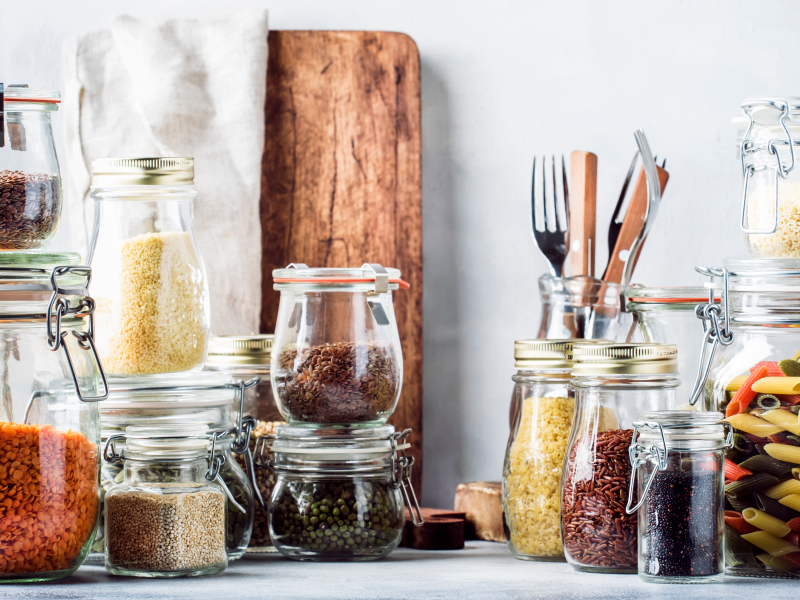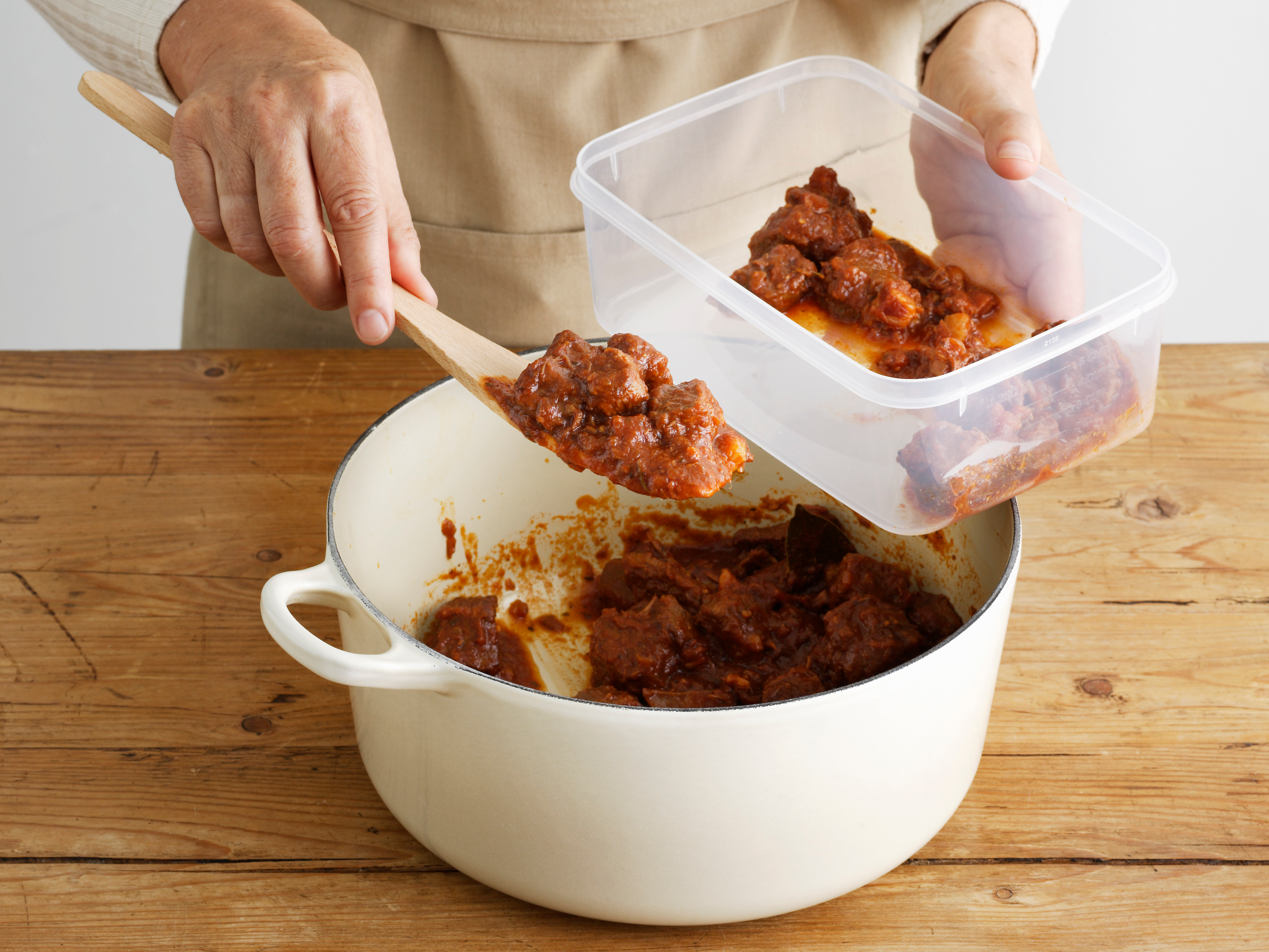- As the novel coronavirus continues to spread across 47 countries, people are bracing for social, economic, and health impacts, including the possible shutdown of businesses and services.
- In a recent survey of 1,051 US adults by Insider Data, 22% said they’ve already begun stockpiling food in case of a coronavirus-related emergency such as a quarantine.
- But you don’t have to be an obsessive prepper to have a good supply ready when you need it.
- Here are some tips from experts on how to build a nutritious emergency stash, and what you can make from those ingredients.
- Visit Business Insider’s homepage for more stories.
As the coronavirus spreads, people across the world are preparing for the possibility of forced quarantines, and shutdowns of businesses and services. According to a survey of 1,051 US adults by Insider Data, 22% are stockpiling food.
If this is you, don’t feel you have to fill your pantry with saltines and tomato soup.
There are ways to eat well even if you’re unable to leave your home for several days, according to Alyssa Pike, registered dietitian and manager of nutrition communications at the International Food Information Council.
Here’s what you should plan to stash in case of emergency, and some tips for prepping healthy, satisfying meals in case of emergency.
Stock up on canned foods that contain liquid, and remember: frozen veggies are just as nutritious as fresh

Dry goods like rice, pasta, beans, oats, and the like, should be your foundation, according to Pike. They have long shelf lives, are easy to store, and can be incorporated into a variety of nutritious meals. Be sure to store them properly - keeping your grains in an airtight container in a cool, dry place to maintain the quality (and taste).
Canned goods have a very long shelf life, are inexpensive, and easy to obtain. However, they can also be bulky and take up space, so prioritize foods that come with a high amount of liquids, to help maximize your liquid intake, too - a top tip from emergency preparation blog Happy Prepper.
For example, with tomatoes or beans: if you're not using the excess liquid immediately, save it to cook other dried food like rice and pasta. Canned tuna can (in water, not oil) can provide liquid as well as protein. Fruits, canned in juice instead of syrup, can also keep you hydrated.
Frozen foods should be part of your stash to add vitamins and nutrients. "Don't forget about your freezer," Pike said. "Frozen foods such as fruits, vegetables also have a longer shelf life than perishable versions."
Frozen peas, carrots, spinach, berries, and the like, are just as good for you as fresh.
Focus on uncomplicated recipes with these simple ingredients

Homemade soups are likely to be lower in saturated fat, sodium and processed ingredients than store-bought, and can be made with canned goods like beans, tomatoes, and veggies, with frozen root vegetables.
Consider this recipe (minus the avocado) for vegetarian chili with sweet potato, black beans, onion, and a jar of salsa with a shelf-stable bouillon cube.
Or, try this black bean soup by combining two cans of black beans with a canned of diced tomatoes with chicken broth (either canned or by mixing a bouillon cube with water) and add whatever you have on hand to season and garnish, like dried peppers, parsley or cilantro.
For breakfast, a good option is oatmeal with thawed frozen berries, nuts, and/or peanut butter.
Pasta salads - like this one with frozen green peas, canned black olives, and Italian dressing - and grain salads can add some variety. This recipe (with canned tomatoes instead of fresh) is a good option.
You could change it up with barley or brown rice, or even add more exotic cupboard ingredients like sun-dried tomatoes, artichokes or sardines if you have them.
For snacks, stockpile high-energy items like nuts and jerky, but also low-sodium dried fruit and protein bars
 Foto: Source: LauriPatterson/Getty Images
Foto: Source: LauriPatterson/Getty Images
Dried fruit, nuts, seeds, and shelf-stable meat like beef jerky can provide an efficient source of energy and other nutrients, and can be stored for long periods of time. They can also provide some much-needed variety to your diet, incorporating macronutrients like fat and protein that you may not get if your pantry is full of rice, rice, and more rice.
However, be wary of consuming too much sodium in dry goods, since that can contribute to dehydration and take up some of your precious water reserves.
Getting enough protein is important not only for energy, and maintaining overall health and muscle, but also for satiety and feeling full even when your eating options are limited. Protein bars and protein powder are good to have in stock, and are often lower in sodium than other protein-rich foods.
Miscellaneous items that will last almost forever in your pantry or survival kit include seasonings like salt and condiments like soy sauce and vinegar. But a few of the most nutritious are peanut butter, and powdered milk, which can provide fats, vitamins, and minerals.
Honey can also be a quick source of energy in times of need and is famously immortal. Pots of the stuff have been found in ancient tombs still preserved after thousands of years, so it will definitely last you 14 days.
Make sure you have the essentials: water and a can opener
In some cases, public emergencies can affect the water supply. Plan to store about a three-day supply, with one gallon of water per day for each person (and pet) in your home, Pike told Insider.
Also, remember the right tools. All the preparation in the world will be useless if you're unable to access your stored goods, or properly prepare them, so be sure to include a hand-held can opener, and eating and cooking utensils.
How to know if your canned food is spoiled
Food poisoning is the last thing you need during a quarantine.
Store and cook food at the right temperatures, and keep a close watch for mold or spoilage - even with shelf-stable food, Pike said.
Canned goods can go bad if the can is damaged. If the can is bulging, or hisses when you open it, the contents have been contaminated and you should discard immediately.
And if you're not sure, don't risk it: "When in doubt, throw it out," Pike said.
Lastly, don't forget cozy comforts like chocolate and coffee

Sweets, coffee, and tea are often overlooked during stockpiling because they aren't essential. But they can make a big difference in your mental health and morale during an emergency.
An emergency may impede access to your usual brew, if you're a coffee drinker. Remember: Quickly cutting out caffeine can lead to physical withdrawal symptoms, like headaches, fatigue, and irritability. Instant coffee crystals, while not the tastiest, can help keep cravings at bay until you can go back to your morning drip or latte.
Instant tea can add some variety to your hydration if you're getting tired of drinking that gallon of plain water every day.
Dark chocolate can last one to two years when properly stored, Fadi Aramouni, professor of food science at Kansas State University, told Best Food Facts. Other shelf-stable sweets like Oreos may taste a little stale after their expiration date, but are still edible until they start to smell gross or crumble, indicating the oils have gone bad, according to the Food Network.
Read more:
SurveyMonkey Audience polls from a national sample balanced by census data of age and gender. Respondents are incentivized to complete surveys through charitable contributions. Generally speaking, digital polling tends to skew toward people with access to the internet. SurveyMonkey Audience doesn't try to weigh its sample based on race or income. A total of 1,051 respondents were collected on February 27, 2020, a margin of error plus or minus 3.09 percentage points with a 95% confidence level.
